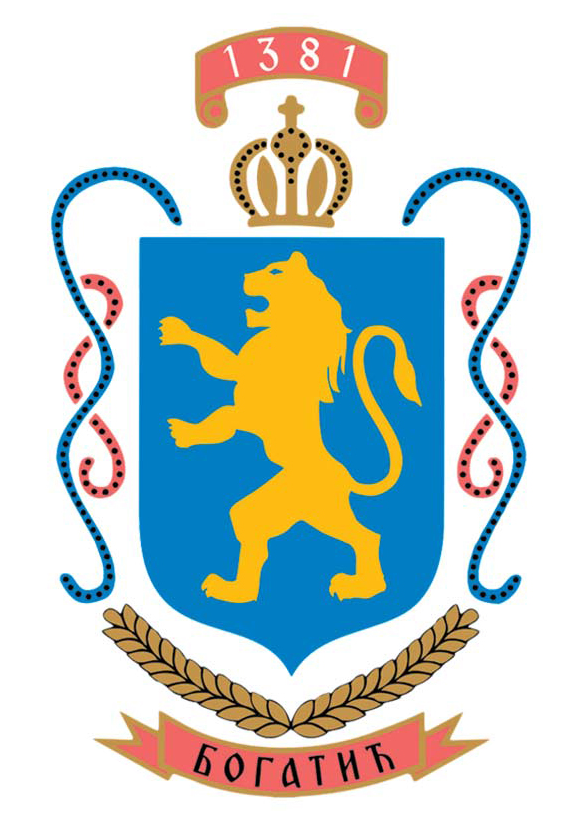Hajdučko evening
The life of the hero, described in the novel “Hajduk Stanko” by Janko Veselinović, encouraged the boys from Crnobar to back in 1966. organize a competition for the selection of Hajduk Harambasha. This first bachelor’s competition grew into a big event of the municipality of Bogatić – “Hajdučko veče”, which is organized every year in the month of August. The main idea of this event is to remind the new generations of the life of their ancestors, to enjoy the beauty of the former life, and for the older Macvanians to remember the time of their youth, which was much closer to the old customs than today.
During the program, visitors to the “Hajdučka veče” event can see a Mačva wedding, an exhibition of local handicrafts, an exhibition of the Mačva Art Village, attend an evening of poets from Mačva, a competition for the selection of a harambasha, a competition for the most beautiful carriage, and observe a cultural and artistic program performed by folkloric amateurs and entertainers. artists. Part of the program is held in Bogatić and Sovljak.
In the afternoon, wedding guests gather at the hippodrome, “at the groom’s house”. When they have gathered, the wedding column, made up of carriages and chaises, richly decorated with towels and flowers, sets out to pick up the bride. According to the script of the program, the bride’s house is in the Ethno-park in Sovljak. At the entrance to Sovljak, the wedding procession and numerous guests are waiting for the bus from Hajduk. From Sovljak, the wedding procession moves to Crna Bara, where the bringing of the bride to her new home is shown with all appropriate details. The most interesting part of the program for visitors is the competition for the selection of the Harambasha. Youngsters compete in stump jumping, shoulder throwing, tug of war, log wrestling, tree climbing and tree climbing. Along the Drina, in a place known as Vasa’s Shib, the most dexterous, nimble and ready guy gets the hajdu saber and the title of Harambasha of the Year. A young man who wins the title three times gets the saber as permanent ownership. When handing over the saber to the Harambashi, a knife is taken out of the cagria (a case for a hanging, small knife), the cake is crossed with it, and then a piece is cut from it. One piece dipped in salt is eaten by the “harambasha”, and then he takes off the anther on which the saber is placed. At the end, the “harambasha” ceremoniously raises and kisses the saber. “… The kićenachutura is prepared, lined with thalers and tsvanciks, and one of the householders takes it, puts it in a bowl, and carries it from uzovnik to uzovnik…!
According to Janko Veselinović, this is how the preparations for the wedding in Mačva began. The host, usually the groom’s father, starts to call the guests with a flask as an invitation to the wedding. First, he was called the best man who marries the newlyweds, then the old man, the old woman, then the brother-in-law, and then relatives and other guests. On the day of the wedding, the wedding party gathers at the groom’s house. After the service (sweets and brandy), the wedding procession moves towards the bride. The column consists of carriages and carriages, richly decorated with white towels and flowers. At the head of the column was usually a carriage with the most beautiful horses, usually crows. The groom and the old woman were sitting in that carriage. The wedding guests wore traditional costumes, the girls wore white embroidered blouses, waistcoats and skirts with dark aprons, and the boys wore formal black pants made of porchette, white shirts and vermen (decorated waistcoat), with a scarf on their head. Everyone had ankle boots and woolen embroidered socks on their feet. There was a musician in each carriage. The sounds of old songs spread across the Mačva plain, on the way to the bride’s house. The very act of entering the courtyard of the bride’s house was characterized by extraordinary beauty, but also drama.
In order for the wedding guests to enter, the groom had to shoot an apple with a holster, which was usually hung on a tall pole next to the big gate. Sometimes the apple would be tied with a thin wire so that it would not fall apart at the first shot of the groom. Then, the proud and stubborn bridegroom would shoot with his yokels until pieces of the apple were scattered in all directions. Only then do the wedding guests enter and sit at the tables. When the in-laws “pay” the bride, she leaves the house accompanied by her brother-in-law and her brother or brothers. The bride wore a string of ducats around her neck. The number of ducats indicated how rich her parents were. If the number of ducats is lower, the bride is rich, that is, she is a dowry. Dowager, Macvanka “brought” land, cattle and her handiwork to the new home. The fun continued with games, toasts, jokes and lunch. After lunch, the wedding party takes the bride to the wedding and then to her new home. In the first years of marriage, the newlyweds lived in a vayat. The father made a new sculpture for the son who was getting married. In front of him, the mother-in-law was welcoming her daughter-in-law. Before entering the house, the newlyweds raised their breeches. Naklece is a small male child. The bride threw wheat from the sieve, and over the house an apple with coins stuck in it. Before entering, the bride kissed the threshold of the statue. These details symbolize the happiness, health and wealth of the whole family.



